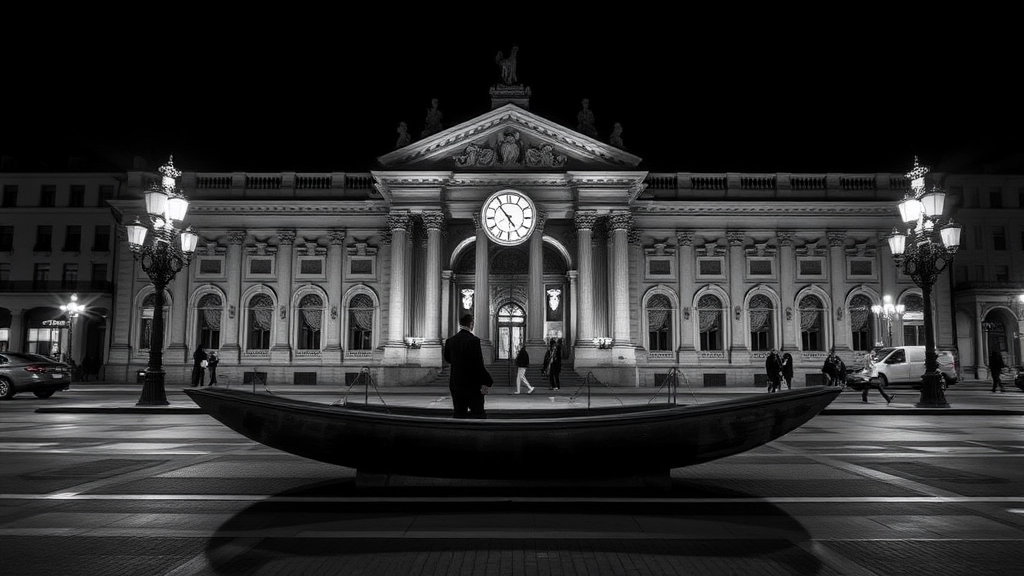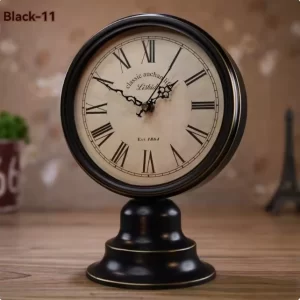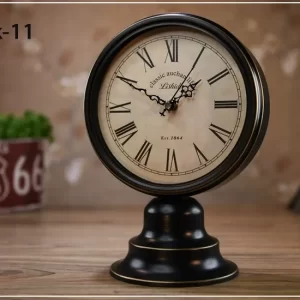MantelClock Studio
All about time
There is no doubt that the ability to measure time plays a vital role in our daily lives. Timing helps us organize everything – whether it’s knowing when to start work, when to prepare dinner or when to pick up the kids from school. In addition to personal scheduling, accurate time measurement is crucial to the modern world. It’s essential for instant global stock trading, GPS navigation and cutting-edge scientific research. Timekeeping brings order to chaos. But why do we measure time the way we do? Why is 1 day equal to 24 hours? Why are 1 hour and 1 minute each divided into 60 units? Why is a second defined as 9,192,631,770 Hz, based on the radiation of a cesium-133 atom? Understanding these questions will take us on a journey through the history of timekeeping, starting with ancient methods of timekeeping and ending with today’s scientifically accurate timekeeping.
Origins of Time Measurement
The concept of measuring time has always been rooted in the motion of celestial bodies. Humans first noticed these patterns 30,000 years ago, and Australian Aborigines recorded these observations as early as 60,000 years ago. The framework that eventually led to the modern timekeeping system can be traced back to the ancient Egyptians. They were among the first to map the activity of celestial bodies and use these maps to create calendars similar to the modern division of time.
Decimal: Egyptian Timekeeping
The Ancient Egyptians invented the “decadal division,” a system of 36 constellations that divided the night sky into 10-degree sectors. Each 10-degree sector rose sequentially over a 10-day period, creating a 360-day calendar year. However, the Egyptians noticed that this left a gap of 5 extra days, so they added these days to align the calendar year with the solar year. Decimal zones also guided the Egyptians in their daily lives, marking the occurrence of major events such as the flooding of the Nile and the arrival of the New Year.
The Babylonians and the 60th-percentile system
Around 1600 B.C., the Babylonians adopted the Egyptian calendar and spent the next 1,000 years refining timekeeping methods. Their arithmetic system , based on 60, is still the basis for dividing hours, minutes and seconds. This 60-based system is also related to the 360 degrees of the circumference and the 360 days of the year, which is divided into 12 months of 30 days each. Sundials first appeared around 1500 B.C., and they further divided the day. However, sundials had difficulty adapting to seasonal changes in daylight. It was not until the Greek astronomer Hipparchus proposed dividing the day into 24 equal parts that the
Sundials first appeared around 1500 B.C., which further divided the day into smaller periods. However, sundials had difficulty adapting to seasonal variations in sunlight. It was not until the Greek astronomer Hipparchus divided the day into 24 equal time periods based on the vernal and autumnal equinoxes that the concept of fixed time emerged. It was not until the advent of mechanical clocks nearly 1,300 years later that this system of timekeeping was widely adopted.
The Rise of Clock Manufacturing
From water clocks to hourglasses and candle clocks, early timekeeping tools had serious flaws. They were imprecise and unreliable, unable to synchronize precisely with celestial events. Medieval Europe needed accurate timekeeping for religious ceremonies, and a solution was found. Weight-driven mechanical clocks appeared in churches with unprecedented accuracy and became the blueprint for all clocks until the 20th century.
In 1644, French mathematician Marin Mersenne experimented with the second pendulum, laying the groundworkfor Christian Huygens to develop the first pendulum clock. This invention remained the world’s most accurate timekeeping device for more than 300 years, making the second a measurable unit of time.
The Problem with Calendars
All timekeeping systems based on the movement of celestial bodies share a common flaw: the Earth’s rotation gradually slows down, and it takes about 365.25 days to revolve around the Sun. Early adjustments, such as the Egyptian leap day, were designed to correct the error. The Romans adopted this system in their Julian calendar, adding a day, February 29, every four years. However, even this adjustment proved insufficient. By the 16th century, the calendar was off by one day every 128 years.
The Gregorian calendar introduced by Pope Gregory XIII solved this problem by introducing a more precise rule for leap years: only century years divisible by 400 were leap years. This system took into account the irregularities of the Earth’s orbit and was in error by no more than one day every 3,000 years.
Modern Definition of the Second
As time measurement evolved, so did the need for greater precision. The Jesuits, known for their mathematical rigor, measured the oscillations of the second pendulum throughout the day, totaling nearly 87,000. This study paved the way for the equation of time, which corrected for changes in the Earth’s orbit. By the mid-19th century, advances in physics and astronomy drove advances in timekeeping technology.
The 20th century saw a breakthrough in this field with the development of the atomic clock. Atomic clocks define a second as 9,192,631,770 hertz, based on the vibrations of a cesium-133 atom. This accuracy is critical for technologies such as GPS, scientific experiments and international time synchronization.
Why timekeeping is important
Timekeeping doesn’t just organize our lives; it’s the foundation of global communication, navigation and innovation. At Mentor Clockworks, we celebrate this rich history and the relentless pursuit of precision. From ancient decimals to atomic clocks, the story of time reminds us of humanity’s eternal quest for order in the universe.
Throughout history, mankind’s fascination with time has driven countless innovations in measurement and precision, and in the 19th century, Jules Lissajous laid the foundations of modern timekeeping when he showed how an electric current could vibrate a tuning fork at a steady frequency. Fast-forward to 1880, when the Curie brothers Pierre and Jacques discovered the piezoelectric properties of crystalline quartz, a breakthrough that would later lead to one of the most iconic advances in horology – the quartz clock.
Despite these breakthroughs, the definition of a “second” remained a challenge. By the 1940s, an official definition was finally given: “1/86,400th of a mean solar day”. However, researchers soon realized that the Earth’s rotation was too erratic to provide a truly reliable standard. Ten years later, a new definition emerged: one second equaled 1/31556925.9747 of a 1900 year. however, with the advent of the atomic clock, this definition also soon proved to be ephemeral.
The invention of the atomic clock revolutionized timekeeping by taking advantage of the predictable behavior of cesium-133 atoms. These atoms transition between 9,192,631,770 energy states per second when exposed to radiation. This groundbreaking discovery provided a stable and reliable basis for defining time, and in 1967 it led to the modern definition of the “second” : “The duration of radiation corresponding to a jump between two hyperfine energy levels in the ground state of a cesium-133 atom is 9,192,631,770cycles.”
It is because of this precision that today’s clocks, from desk clocks to smartphones, rely on synchronized atomic time. The clock in your pocket is probably the most accurate timepiece you own, and it is in perfect harmony with the atomic standard. This harmony ensures that every second you count is the same across the globe, uniting us all in the flood of time.
At Mantel Clockworks, we celebrate this remarkable journey. Each clock we design honors those who have shaped our understanding of time. In every tick lies a story of human perseverance, scientific exploration, and artistic creativity.
When you gaze upon a clock from the Mantle Clock Studio, it is sure to remind you of the extraordinary achievements of mankind in timekeeping – solving this age-old problem through ingenuity and collaboration. Whether it’s a mantel clock that adds a classical touch to your home or a smartphone that keeps you in touch with the time, these tools bear witness to our shared quest for precision, accuracy and elegance.
From quartz vibrations to atomic oscillations, the way time is measured has evolved, but its essence remains the same: to help us organize our lives, mark our moments, and cherish our journeys. With MantelClock Studio, you’re not just telling time, you’re experiencing history.
-
Elegant Black Mantel Clock for Living Room – Silent & Stylish
Original price was: $180.00.$170.00Current price is: $170.00.





